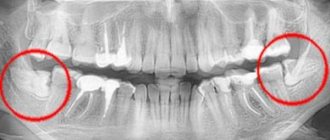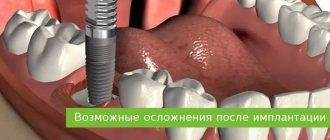Tonsillitis is a word familiar to many and means habitual sore throat. However, in addition to inflammation, “stones” can also form in the tonsil. They are called tonsillitis stones. What are formations and what can they lead to?
“In fact, the term “tonsillitis stones” is translated from English. Abroad, what we often call traffic jams is called “stones,” which is why the term has become so Russian,” says Vladimir Zaitsev, Ph.D., otolaryngologist of the highest category .
What is the essence of the phenomenon?
It is worth understanding that the stone in this situation is not a real stone, not like a brick, notes Vladimir Zaitsev. “We are talking about caseous masses. These are very bad masses - essentially, compressed streptococcus, which is located at the level of the pharynx in the thickness of the palatine tonsil. This is where they are produced, and when the situation worsens, tonsillitis begins,” says Vladimir Zaitsev.
In such a situation, the specialist notes, symptoms such as:
- sore throat;
- tickling sensation;
- sore throat;
- discomfort when swallowing;
- soreness develops.
“In essence, the tonsil can no longer dispose of an infection - neither bacterial nor viral - that enters the pharynx. Normally, it should process all the infection that gets inside. But she can't do it. And the tonsil actually becomes a reservoir of streptococcal infection,” says the ENT doctor.
Vladimir Zaitsev says that in such a situation, the amygdala begins to produce (produce) certain streptococcal grains, grains of sand, which first have a cheesy density, then a cheese density appears, and then they become like hard, dense cheese. Indeed, visually they resemble small pebbles. There are a lot of them - literally the whole tonsil is stuffed with them. “They can even spill out when swallowed and emerge from the thickness of the palatine tonsils. Sometimes people even start squeezing them out themselves, for example, using a spoon. However, it is important to understand that such extrusion very often leads to crushing of the tissue. It is already inflamed, tense, and if you press on it with a spoon, knife, fork, or anything else, injury is likely. Even just mechanical compression of the tonsil does not have the best effect on it, since it is a very delicate anatomical organ that does not tolerate such sharp pressure,” explains Vladimir Zaitsev.
How to eat ice cream without harming your health. 5 rules from ENT Read more
Causes of tonsil stones formation
Tonsils are glands at the back of the mouth that trap bacteria and prevent infections from entering the body. The tonsils have many folds called crypts. Food debris can accumulate in these parts of the tonsils and harden into stones. Enlarged almond crypts can also retain calcium, which can then harden. Tonsil stone is a living biofilm. Bacteria secrete a sticky substance to attach to surfaces in moist environments such as the mouth, forming a biofilm. The same bacteria and fungi that can cause tonsillitis, an inflammation of the tonsils, can also cause tonsil stones.
How is the diagnosis made?
The diagnosis, of course, must be made by a doctor - he has a special set of manipulations, techniques and tools with which he accurately determines the problem. However, Vladimir Zaitsev notes that in a situation with tonsillitis stones, a person himself can make a diagnosis with 100% accuracy.
“All you have to do is go to the mirror with a flashlight or mobile phone, open your mouth wide and shine the light inside. If you notice round curds or cheese masses in the tonsil area, then you can be sure that this is it. In color, such masses can be whitish-yellowish, yellow or even brown-yellow, because the older the cork, the darker it is,” warns Vladimir Zaitsev.
He also notes that sometimes you can smell a not very pleasant smell. Naturally, after this you need to go to the doctor without delay, since such stones are fraught with serious complications. Often unexpected.
Lump in the throat. Causes of the problem and diagnostic advice from a doctor Read more
What can such formations lead to?
As a rule, says Vladimir Zaitsev, a patient goes to the clinic with such stones due to the appearance of bad breath. “Women are bothered by the smell. Men don't tolerate it particularly well either. They can chew gum constantly, but this won’t get you far; brushing your teeth all the time won’t work either, for example, doing this at work is not particularly convenient. Mostly, people start treatment just to get rid of the smell,” complains otorhinolaryngologist Zaitsev.
And this is incorrect, since tonsillitis stones actually entail serious consequences. “Women’s gynecology can even suffer, quite significantly, even to the point of miscarriages, miscarriages, and the inability to get pregnant in general. And the culprit is tonsillitis streptococcus. Hair may also fall out, and women fight for their beauty, but to no avail. The skin may also suffer - it is pale, lifeless,” warns Vladimir Zaitsev.
In fact, says the specialist, tonsillitis stones hit the kidneys, joints, and heart. Associated organs and systems that contain a lot of connective tissue suffer - this means kidney tissue, articular surfaces, and the inner surface of the heart. Rheumatoid arthritis, endocarditis, rheumatic carditis, and glomerulonephritis may develop.
Surgical methods of treatment
The decision to remove tonsils is not made very often. And it is impossible to simply perform an operation at the request of the patient. The time has passed when tonsils were removed for prophylaxis, so that sore throats would no longer bother you. Modern otorhinolaryngologists call for fighting for such an important organ of the immune system as the palatine tonsils, and trying to be treated conservatively. In cases where treatment does not help, a decision is made about surgery. To carry it out, a number of indications are required:
- more than four cases of sore throat per year;
- bad rheumatic tests;
- a peritonsillar abscess that has occurred;
- development of complications on the heart, kidneys and joints.
If the indications for removal are one hundred percent, the patient will be offered several methods of performing the operation: using a scalpel, shaver, laser, cryodestruction or electrocoagulation. An otolaryngologist will tell you in detail about the advantages of each method.
How are they treated?
Otorhinolaryngologist Zaitsev says that the treatment of tonsillitis stones is a two-stage process. First, they should be removed. “This should be done by an ENT doctor. Previously, the syringe washing technique was used, but now it has become obsolete. Today they use a vacuum washing technique, which is more effective for washing out caseous masses from the thickness of the palatine tonsils,” explains Vladimir Zaitsev.
The second step is to eliminate inflammation. This is required so that the amygdala stops producing a new portion of this caseosis.
Life without smells. Why do problems with the sense of smell occur? More details
Removing tonsillitis plugs: how to remove them correctly?
Removal of caseous masses from the lacunae of the palatine tonsils is the most important part of the treatment of chronic tonsillitis, which should be carried out by an experienced ENT doctor in the clinic. Many patients mistakenly believe that they can remove the purulent contents of the tonsils on their own. A wide variety of items are used: from spoons and matches to toothpicks. Some people manage to remove traffic jams with cotton swabs or their tongue. But we strongly do not recommend resorting to such measures. Attempts to pick out purulent plugs can result in damage to the delicate tissues of the tonsils and infection of the wounds, since rarely do any patients observe proper sterility standards during the procedure.
Modern ENT clinics offer two ways to get rid of plugs: rinsing the palatine tonsils with a syringe and rinsing the palatine tonsils using the Tonzillor apparatus. Removing plugs with a syringe is done less and less often: this method is traumatic and does not allow you to fully wash the tonsils.
The second method is considered the most effective. The nozzle of the Tonsillor device is brought to the tonsil and, like a vacuum cleaner, draws out the purulent contents of the tonsils into the nozzle cup. True, due to the fact that the nozzle cup is opaque, the ENT doctor does not always see whether the tonsils are completely washed - so he has to carry out several additional procedures to remove the caseous masses for sure.
"Doctor Zaitsev's ENT Clinic" offers a third method: removing plugs using a modified attachment of the "Tonsillor" device.
There are no analogues of such a nozzle in any of the Moscow clinics, since it is a unique development of the founder of the “ENT Clinic of Doctor Zaitsev” - Vladimir Mikhailovich Zaitsev and his colleagues.
The improved nozzle is much more convenient than its predecessor. Its rounded edges do not injure the tissue of the tonsils, which sometimes happens with a conventional nozzle, and the transparent cup of the nozzle, into which the contents of the lacunae are washed out, immediately helps the doctor understand when the procedure can be completed without conducting unnecessary sessions. Thereby saving the patient time and money. The attachment can be used even when treating small patients - its small size is ideal for children.
Preventive measures
Of course, prevention is a more interesting option to avoid serious health problems. Here, as the ENT doctor notes, there should be a whole range of measures, which includes:
- a trip to the sea at least once a year;
- good sleep;
- establishing a drinking regime so that the ENT organs do not experience drought;
- treatment of caries;
- saturating the body with vitamin D under reasonable conditions;
- proper and balanced nutrition without fast food.
“You should also monitor that there are no inflammatory processes in the ENT organs and systems. This is especially important in terms of the nasal mucosa and paranasal sinuses. Postnasal drip, rhinosinusitis, when mucus flows down the back of the throat, affects the tonsils, as they are also affected. So, good immunity in the ENT organs will help prevent the development of tonsillitis stones,” warns Vladimir Zaitsev.
Treatment methods for chronic tonsillitis
Chronic inflammation of the palatine tonsils in the early stages is treated conservatively, of course, under the supervision of an otolaryngologist. Only an ENT doctor, after an examination and confirmation of the diagnosis, can prescribe an effective treatment regimen and carefully remove plugs, which will significantly increase the remission stage and make you forget about the symptoms of the disease for a long time.
Drug therapy includes:
- a course of taking antibacterial drugs (“Azithromycin”, “Augmentin”, “Summamed”, etc.);
- treatment of the tonsils with antiseptic drugs (Lugol);
- taking antihistamines to relieve swelling of the mucous membranes (Claritin, Zodak, etc.);
- gargling with antiseptics (“Miramistin”, “Chlorhexidine”, “Furacilin”);
- irrigating the pharynx with anti-inflammatory sprays (Ingalipt, Hexoral).
Among the traditional medicine recipes in the fight against inflamed tonsils, gargling with herbal decoctions (sage, chamomile, St. John's wort) and inhalation, where decoctions of the same medicinal herbs are used as a solution, have proven themselves to be effective.
Friends! Timely and correct treatment will ensure you a speedy recovery!
Physiotherapeutic procedures that are carried out in the ENT clinic help to consolidate the positive effect of drug therapy and speed up the healing process: laser therapy, ultraviolet irradiation, vibroacoustic effects, etc.
Make an appointment right now!
Call us by phone or use the feedback form
Sign up
Folk remedies can be used in parallel with prescribed therapy (but not instead!) and only in consultation with an ENT doctor.
Only an ENT doctor should remove one or another drug from the treatment regimen or add a new one. Self-medication is unacceptable: many cases have been recorded where improper treatment of inflamed tonsils led to complications in other human organs and systems: complications in the heart, kidneys and joints.
I would like to dwell in more detail on how to properly remove traffic jams.










